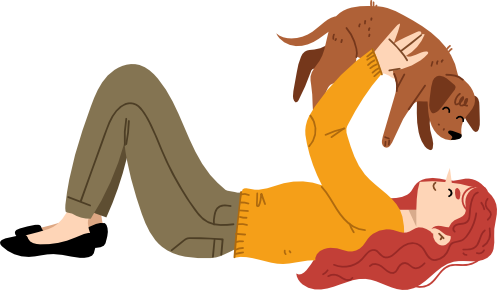My two border collies and I moved into a 2006 Dodge Sprinter in May 2021. As we’ve adjusted to vanlife with dogs, I have found a few skills are absolute must-haves for the pups.
In many ways, vanlife is pretty different from your average home. Vans are super small – about 80 square feet. This limited space means that your dog(s) need several practical skills to keep everyone sane. Since you may also park your van in a variety of places, safety skills are also paramount to avoid accidentally losing your dog to the great outdoors!
I have also found it very important to teach my dogs to quietly ignore hubbub outside the van, to stay quiet in their crates or seatbelts while driving, and to generally tolerate living in a van. I don’t include those here because they’re more of “life skills” than specific cues I use to instruct or guide them.
Here are the four skills I find most important while sharing my van with my dogs:
1. Stationing: Stay Out from Under my Feet!
What it is: Have your dogs stay put in the driver’s seat, on your bed, or on a carpet square in your kitchen.
Why it’s a lifesaver: Have we mentioned vans are TINY? It’s almost impossible to cook if the dogs are anywhere except the bed or the front seats. I use stationing multiple times each day to move the dogs from one place to another. This saves me frustration and saves their toes from being trodden on!
How to teach it: I use mat training to get my dogs started. I also taught both dogs an “up” cue, which I use get them onto the bed. I then intermittently reward them (the household favorite is Marsh Dog treats) while they stay put and I cook or clean.

2. Wait: Don’t Charge Out the Door
What it is: Teach your dogs to automatically pause when you open the van door rather than charging outside.
Why it’s a lifesaver: When your front door opens to a different landscape every day, it’s incredibly important that your dogs don’t rush out the door! There could be traffic, wildlife, or unfriendly neighbors right outside the van door! It’s also really nice to not have dogs charging out the door (and into your knees) when you’re trying to load gear or food into the van.
How to teach it: I teach this using a modified “It’s Yer Choice” procedure. I have the dogs on leash at first, and as I open the door slowly I say “wait.” If they try to go forward, the leash stops them and I close the door. We practice this until I can open the door fully. I then release the dogs. I generally teach “wait” and “free” at the same time for clarity. Over time, I fade out the leashes, the slow door-opening, and the verbal reminder to wait. After a few months of practice, the dogs know to politely wait without me saying anything!
3. Free: Go Ahead, Pups
What it is: Release the dogs to exit the van when you want rather than the moment the door opens!
Why it’s a lifesaver: Teaching “free” makes it super-clear to your dogs what the point of “wait” is. Sarah Stremming and many other great trainers actually teach “free” instead of wait. This helps the dog know exactly what to do and helps us rely heavily on positive reinforcement by rewarding the dog for following the cue “free,” as opposed to punishing a dog for not waiting.
How to teach it: This one is pretty easy! I teach “free” as a versatile cue simply by giving the cue whenever I release my dogs towards reinforcement. Unclip the leash? Say “free” as you release the dog to off-leash bliss. Put the dogs in a stay? Say “free” as you toss their treat or toy. Opening a door? Say “free” as you sidestep to clear their path outside.

4. Leave It: Ignore that, Please
What it is: Leave it simply tells your dog to ignore (or at least not move towards) something that’s exciting, tempting, or upsetting to them.
Why it’s a lifesaver: Whether I’ve dropped food, there’s a squirrel across the road, or there’s a nosy dog snuffling around the van, it’s helpful to be able to tell the dogs to ignore that! This is a must-have in any household, but when you and the dogs are always in such close proximity, it’s helpful to be able to remind the dogs to leave things alone!
How to teach it: Again, I teach this using “It’s Yer Choice.” Over time, we don’t just use this for food. I also will say “leave it” and then reward the dogs for orienting their attention towards me. This helps if we’re on a walk and they see a squirrel, or they’re in the front seat of the van and they’re fixating on another dog. To us, “leave it” doesn’t just mean ignore the temptation – it also means to return to me for a treat.
Do you have any other must-have skills for your vanlife pups? I’d love to hear your suggestions or additions below!

